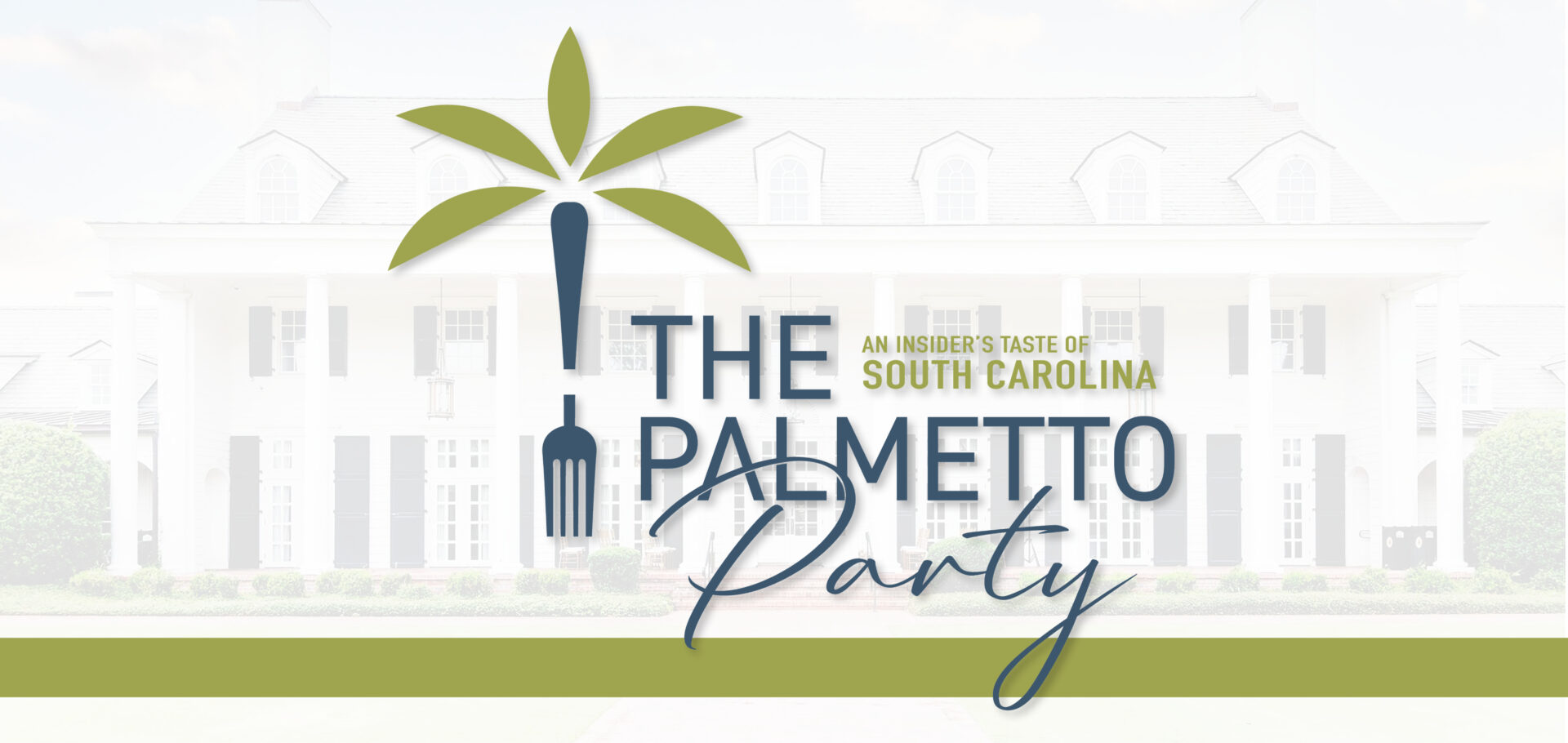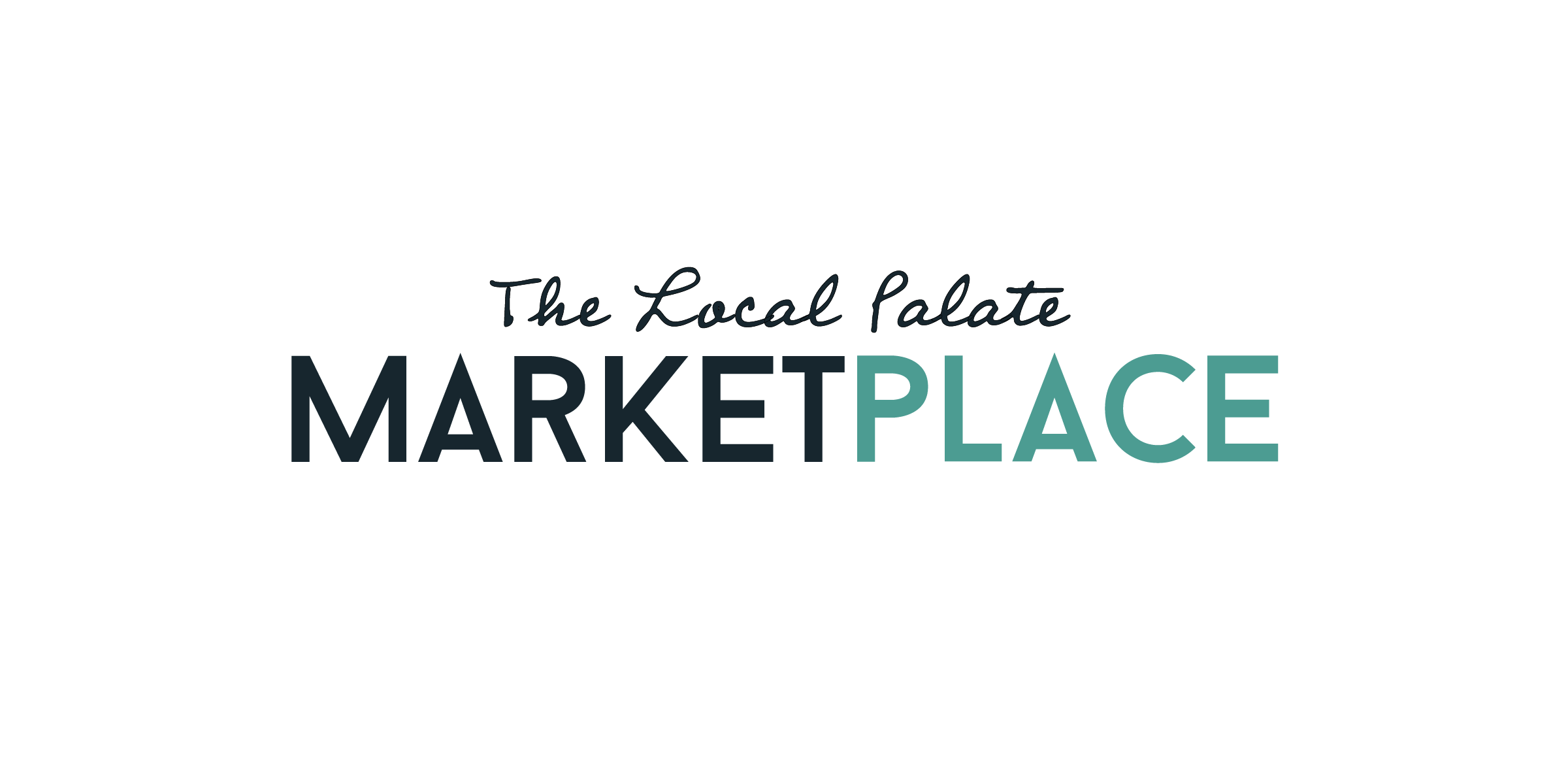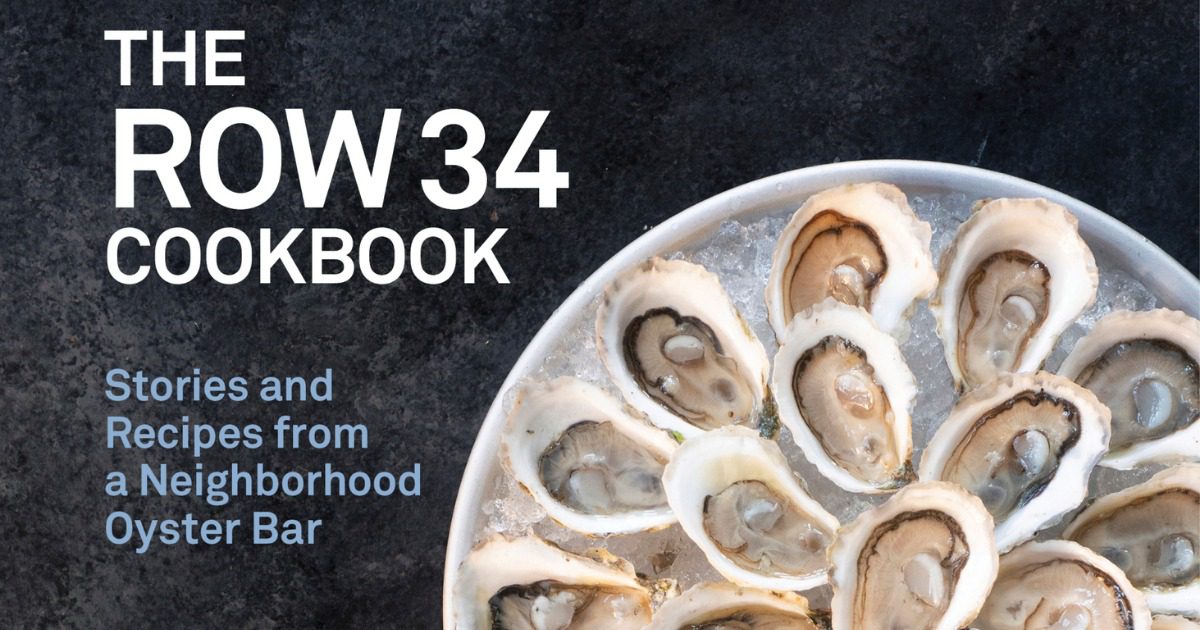The Local Palate Editor in Chief Erin Byers Murray is our resident oyster expert. She lived and worked on an oyster farm in Duxberry, Massachusetts, in 2009. There she took a deep dive into the oyster industry for her first book, Shucked: Life on a New England Oyster Farm and has revisited the topic in a new cookbook, The Row 34 Cookbook (Rizzoli). Out October 12, 2021, it’s a collaboration between Murray and Jeremy Sewall, the acclaimed chef-owner of Row 34 oyster bar.
Row 34 is a classic New England oyster bar. A staple among the Boston, Burlington, and Portsmouth neighborhoods, Row 34 has also garnered attention from Bon Appetit and GQ magazine. The restaurant fills an essential role in uniting the oyster farmer, fisherman, and consumer, along with the communities surrounding each.
In The Row 34 Cookbook shares the restaurant’s beloved recipes, like chowder, fried oysters, and smoked fish along with practical knowledge for preparing seafood and profiles of oyster farmers and fisherpeople. In anticipation of the book’s release, Murray gives us an inside look at her experience working on the book and what readers can look forward to.
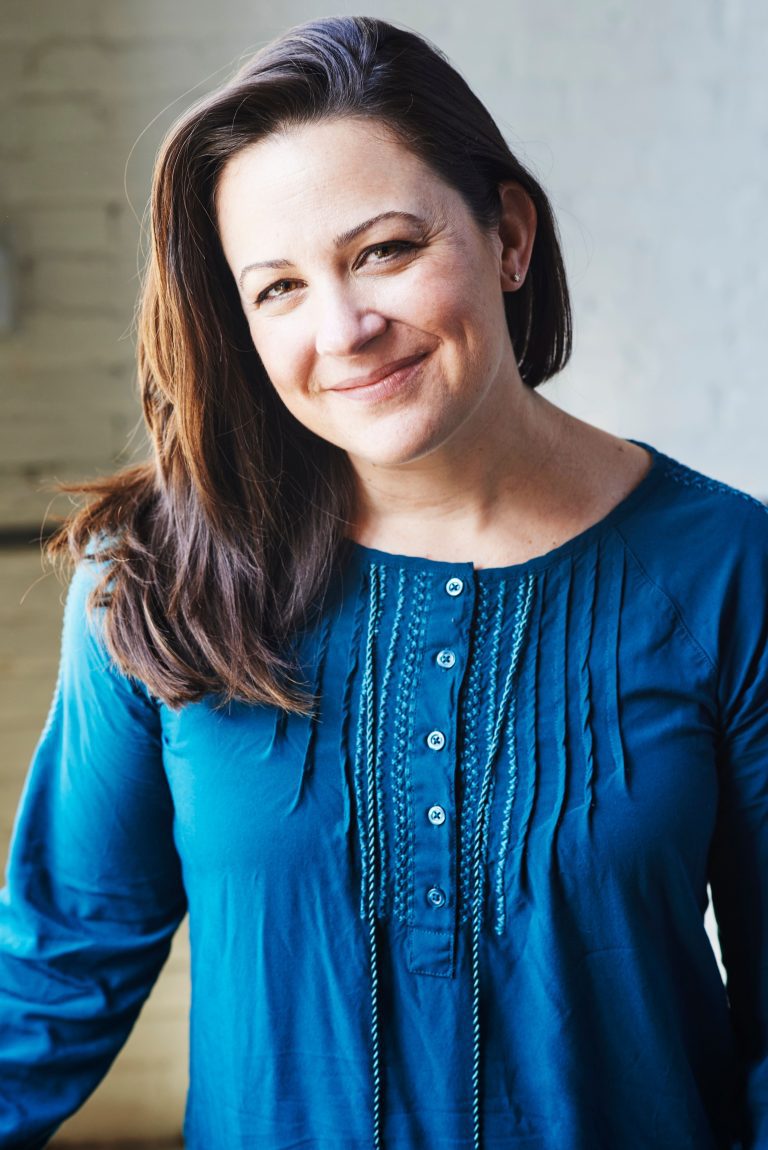
ERIN BYERS MURRAY DISCUSSES THE ROW 34 COOKBOOK
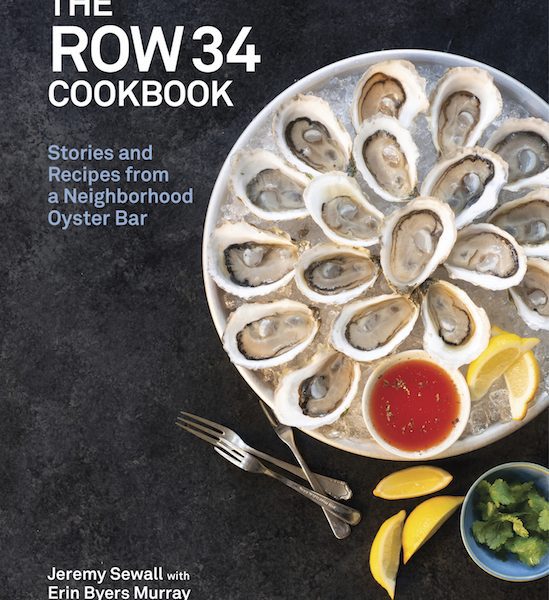
The Local Palate: How did you connect with Jeremy Sewall? What about Row 34 or the communities it showcases made this project compelling to you?
Erin Byers Murray: Jeremy and I first met when he opened a restaurant in Boston called Great Bay in 2003. He’d just moved back from California to open his own place, and I was just starting out as a young food writer up there. Our paths crossed again when I was working for Island Creek Oysters (researching my first book, Shucked). Jeremy was one of the first chefs to ever visit the oyster farm way back when and eventually he went on to open multiple restaurants with the team at Island Creek. One of those restaurants is called Row 34 (named for a specific variety of oyster grown by Island Creek), and it’s a fantastic oyster bar and beer hall where the raw bar is front and center and the dishes are really seafood focused.
I love Jeremy’s food. We did our first cookbook together back in 2014, called The New England Kitchen (Rizzoli) so The Row 34 Cookbook (Rizzoli) is a follow-up and covers the culture and cuisine of the modern-day oyster bar. It’s packed with oyster knowledge, as well as Jeremy’s ethos on seafood, sustainability, and understanding where our food comes from. I’ve learned so much from him over the years so it’s been a true joy creating books together.
TLP: The story of Row 34 is intertwined with Boston and Burlington, Massachusetts, and Portsmouth, New Hampshire. Are there any distinct differences between oyster culture/industry in New England and that in the South?
EBM: I would say yes and no. The amazing thing about oyster farming and aquaculture is how open all of the farmers and growers are. Whether you’re in New England visiting Island Creek or in Alabama visiting Murder Point, the farmers are open to sharing all that they’ve learned, which is rare in other parts of the seafood industry. Oyster farming takes a ton of by-the-bootstraps, hands-on ingenuity—they’re often building their own equipment to match what will work in their waterways, and always having to adapt to what Mother Nature is throwing at them. What differs is the forces they face (bitter winter cold in New England; acidic ocean waters in California; hurricanes in the Southeast) as well as the markets they serve.
In the South, oyster bar culture is just starting to come into its own, mostly because oyster aquaculture has really begun to heat up down here recently. Just look at Kimball House (in Decatur, Georgia), The Ordinary (Charleston), and Henrietta Red (Nashville). They and dozens more have just in the past few years really started to put an emphasis on Southern-grown oysters and celebrating those farmers.
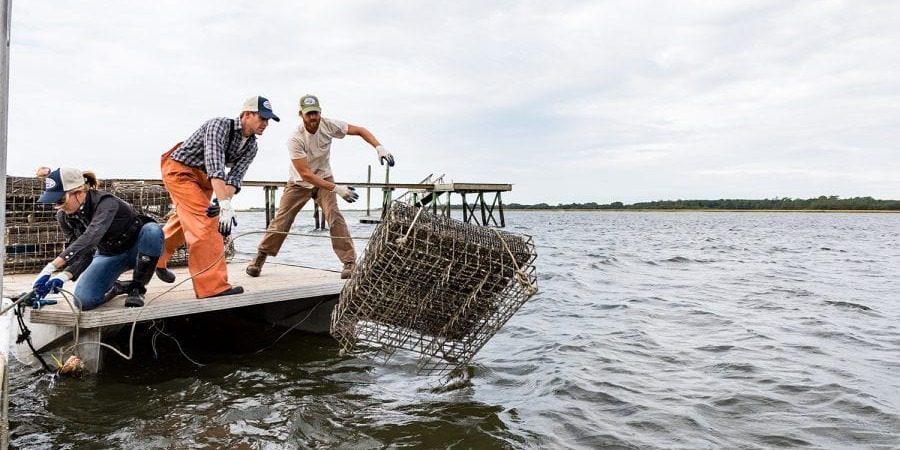
TLP: Your book Shucked: Life on a New England Oyster Farm was published in 2011. What elements of your background uniquely positioned you to work on The Row 34 Cookbook?
EBM: I like to call my time working for Island Creek Oysters my “PhD in oystering.” That experience not only prepared me with a wealth of knowledge about oysters and the entire seafood industry, but it also connected me directly to Jeremy. He and I were working on the proposal for our first cookbook while I was still on the farm. All of those projects have very organically fed off one another and generated so many new ideas for me.
TLP: This doesn’t feel like a cookbook in the traditional sense (entirely recipe driven, less narrative). Here, there’s storytelling, informative seafood guides, and recipes steeped in the book. How would you describe Row 34 Cookbook?
EBM: I think of this as a narrative-driven cookbook. Meaning: You can pick it up and read from different parts of it while also discovering a range of new recipes. However you choose to use it, you’re going to learn something new.
TLP: Between your research and the other authors’ contributions, what did you learn that surprised you the most?
EBM: Jared Auerbach runs Red’s Best in Boston—it’s a wholesale seafood distributor and they’re using incredible technology to get fish from the boats of a network of individual fishermen into the hands of a large number of people. His story is fascinating.
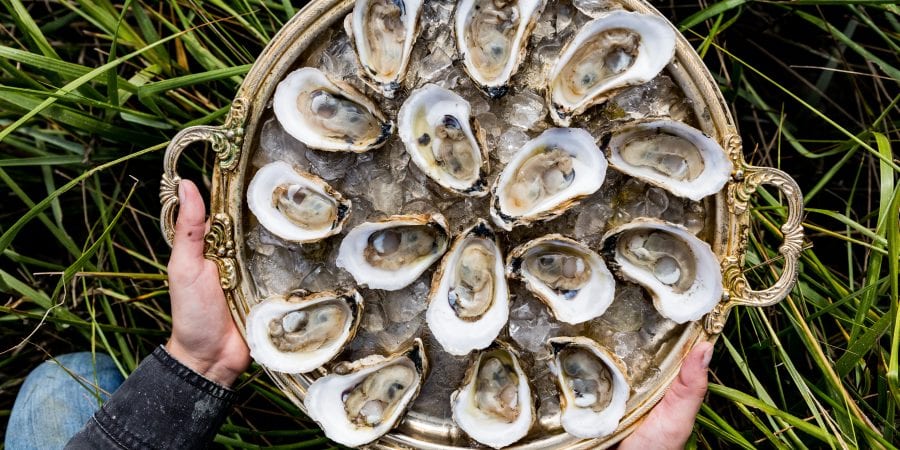
TLP: Finally, what’s your favorite recipe or cooking technique in the book?
EBM: Jeremy and I spent a lot of time detailing the directions for how to smoke seafood at home. It’s so much easier than you might think, especially when you use a handheld smoking device. With a little bit of time and the right tools, smoking foods in your own kitchen can be pretty straightforward. His delivery and explanation made me feel confident to be able to do it in my own kitchen. Also, Jeremy included a recipe for butterscotch pudding in the book—made with real scotch—and that’s a new-to-me trick I’ll be using for a long time.
share
trending content
-
Chefs Heading To The Palmetto Party
by TLP's Partners -
A First Look at Fancypants | Listen
by Erin Byers Murray -
How to Build the Perfect Cheese Board | Video
by Maggie Ward -
5 Things to Do in Bath County, Virginia
by TLP's Partners -
Bearing Fruit at Big Apple Inn
by Erin Byers Murray
More From Bookshelf
-
Bookshelf: Las Islas Bonitas | Listen
-
The Best Southern Cookbooks of the Season | Listen
-
Maydan: Recipes from Lebanon and Beyond
-
Bookshelf: Thoughtful Cooking
-
Stock the Shelves: The Best Cookbooks of 2023

